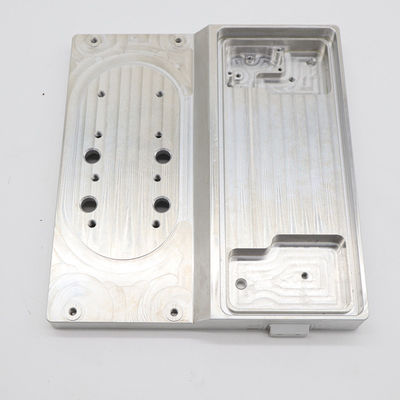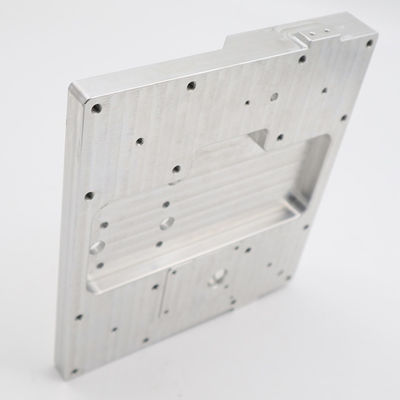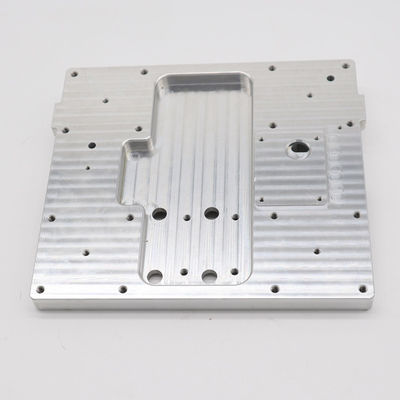OEM CNC Milling
Product Details
Poduct Name: OEM CNC Milling
Material: Aluminum
Surface Treament: As Machined
Size: Customized
Process Machine: CNC milling machine
Trade Terms: EXW
Proofing Time: 5-10 Days
Production Time: It depends on the structure and qty of the parts
Tokerance: ±0.05mm
Application: Equipment
Origin: Dongguan, China
Material Available for CNC Machining Part
| Aluminum |
2000 series, 6000 series, 2024, 6061, 7050, 7075, 5052, 5083, etc |
| Stainlesss Steel |
200/300/600 series, SUS303, SUS304, SS316, SS316L, 17-4PH, etc |
| Steel |
1214L/1215/1045/4140/SCM440/40CrMo, Q195, Q215, Q235, Q255, etc |
| Brass |
260, C360, H59, H60, H62, H63, H65, H68, H70, H80, H90 Bronze, etc |
| Copper |
C11000, C12000, C12200, C10100, etc |
| Titanium |
GradeF1-F5, TA16, TA17, TB6, TB9, TC4, etc |
| Plastic |
ABS, PC, PP, PVC, POM, PEEK, PMMA, etc |
Get to Know the Tools Used in CNC Milling Curved Surface
To obtain a smooth curved surface on the part being manufactured, circular end mills of different variants are used. These include round inserts, ball-end indexable end mills, and ball-end solid carbide. The circular contour tool is the first choice for contour machining applications because it does not leave obvious tool path marks.
Insert type end mills with round inserts-These tools usually have large tool diameters. Round-blade end mills are very suitable for roughing operations due to their high stability and impressive productivity.
Solid ball end mills-these end mills can leave a very good surface finish on the machined parts. Due to their structure, they may have low stability. This is why they are more commonly used for finishing rather than roughing.
Indexable head ball end mills-Indexable head end mills are similar to solid carbide end mills, but with replaceable cutter heads. These special tools have a detachable end that can be replaced when needed.
About Technical Drawing for CNC Machining
1. Determine the Project: Start by deciding what you want to make with the CNC machine. This will determine the size of the project, the materials you'll need and the tools you'll need.
2. Create a Technical Drawing: Once you have determined the project, create a technical drawing. This should include all measurements, angles, and other specifications. Consider using CAD software to create a detailed drawing.
3. Determine the Tool Path: Once the drawing is complete, you need to determine the tool path. This is the path the cutting tool will take during machining. Consider the shape, size, and complexity of the project when determining the tool path.
4. Select the Cutting Tool: Select the cutting tool that will be used on the project. This should be based on the material you are machining and the complexity of the project.
5. Program the CNC Machine: Once all of the above steps are complete, you can program the CNC machine. This usually involves entering the project specifications into the CNC machine's software.
6. Start Machining: The final step is to start the machining process. Make sure all safety procedures are followed and that the CNC machine is operating correctly. Monitor the process and make adjustments as needed.
CNC Machining Parts Gallery

FAQ
Q: What is the shipping method?
A: For engineering samples we will send out by international express service or by air. For mass-production, it depends on weight and volume, usually by air or by sea.
Q: Is it possible to know how are my products going on without visiting your company?
A: Yes. We will offer a detailed production schedule and send weekly reports with digital pictures and videos which show the production process.
Q: If you make poor quality goods, will you refund our fund?
A: As a matter of fact, we won't take a chance to do poor quality products. Meanwhile, we manufacture goods quality products until your satisfaction.
Q: How to contact sales person?
A: Please send us inquiry or e-mail directly. Or you can talk with us online by trademanager, skype, whatsapp, WeChat, etc.
Q: What's kinds of information you need for a quote?
A: Kindly please provide the product 2D drawing with PDF or DWG format and 3D drawings with STEP or IGS or X_T format, and other requirements like: surface treatment, quantity...etc.

 Your message must be between 20-3,000 characters!
Your message must be between 20-3,000 characters! Please check your E-mail!
Please check your E-mail!  Your message must be between 20-3,000 characters!
Your message must be between 20-3,000 characters! Please check your E-mail!
Please check your E-mail! 













